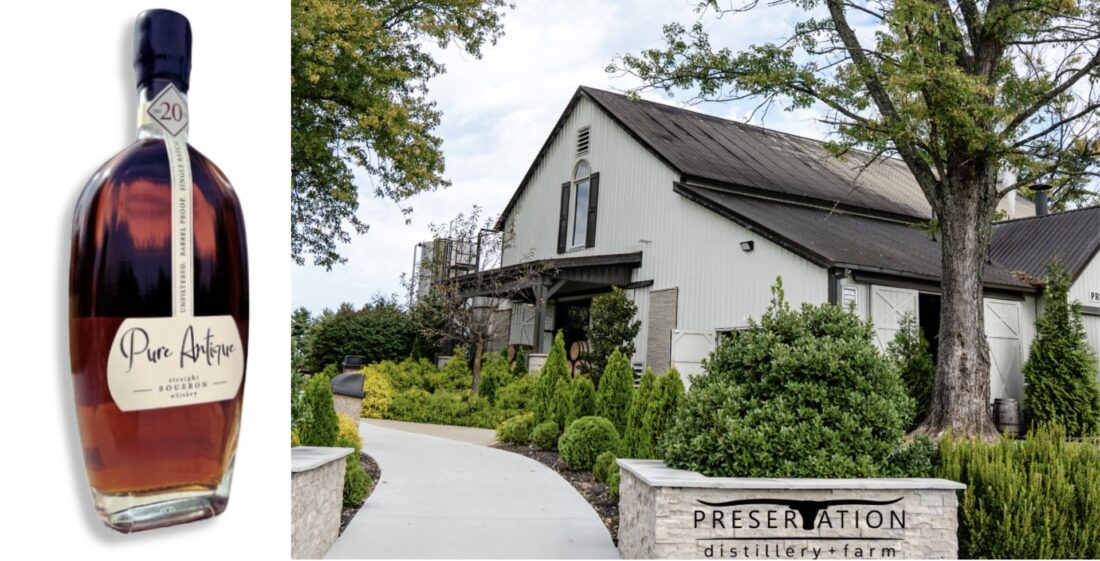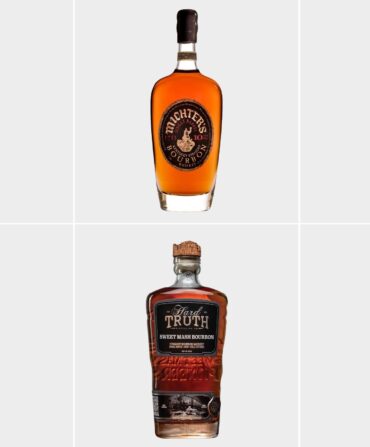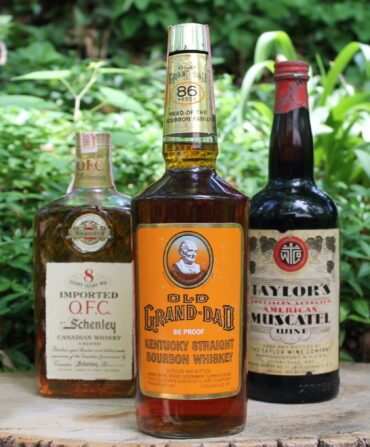The bourbon world is finally catching up with Marci Palatella. In October, her Pure Antique 20-Year, which she blended from precious little stocks of ultra-aged whiskey, was deemed the best overall bourbon at the 2024 San Francisco World Spirits Competition, taking the top award in one of its largest categories. (The competition this year received more than 5,000 total entries across all spirits.) While the high-profile recognition is new, the approach is one that Palatella has pioneered over a decades-long career. “We are not an overnight success,” she says.
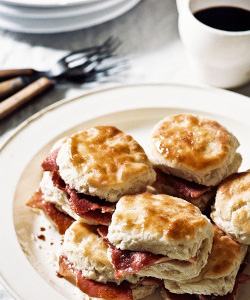
Beginning in the 1980s, when bourbon’s waning popularity was on par with bell-bottoms and Pet Rocks, Palatella bought up cases of old whiskey from wholesalers who couldn’t get rid of the stuff. Drawing on her background as a wine broker, she formed a distribution company and started exporting to markets throughout Europe and Asia. “I gave it an innocuous name [International Beverage] and made myself vice president,” she says. “I was dealing around the world, and I thought, ‘Nobody is going to want to do business with a blonde girl in her twenties with no experience.’”
When those reserves ran dry, Palatella sourced barrels of old bourbon from Kentucky and elsewhere. She’d bottle it using excess supply from wine bottle companies and design labels to match. Palatella bottled the whiskey as cask-strength blends or as single-barrel bourbons, which was nearly unheard of at the time. “My first one was Olde St. Nick,” she says. “I drew it on a brown grocery-shopping bag.” It took a while to catch on, but Olde St. Nick and Very Olde St. Nick, launched in Japan in 1986, are now sought-after worldwide, as are the dozens of labels she subsequently established. Palatella creates each unique release in very small batches, using no more than three barrels at a time. For this year’s award-winning Pure Antique, she used barrels of ten-year-old bourbon distilled in Tennessee that she then aged for an additional decade in Kentucky.
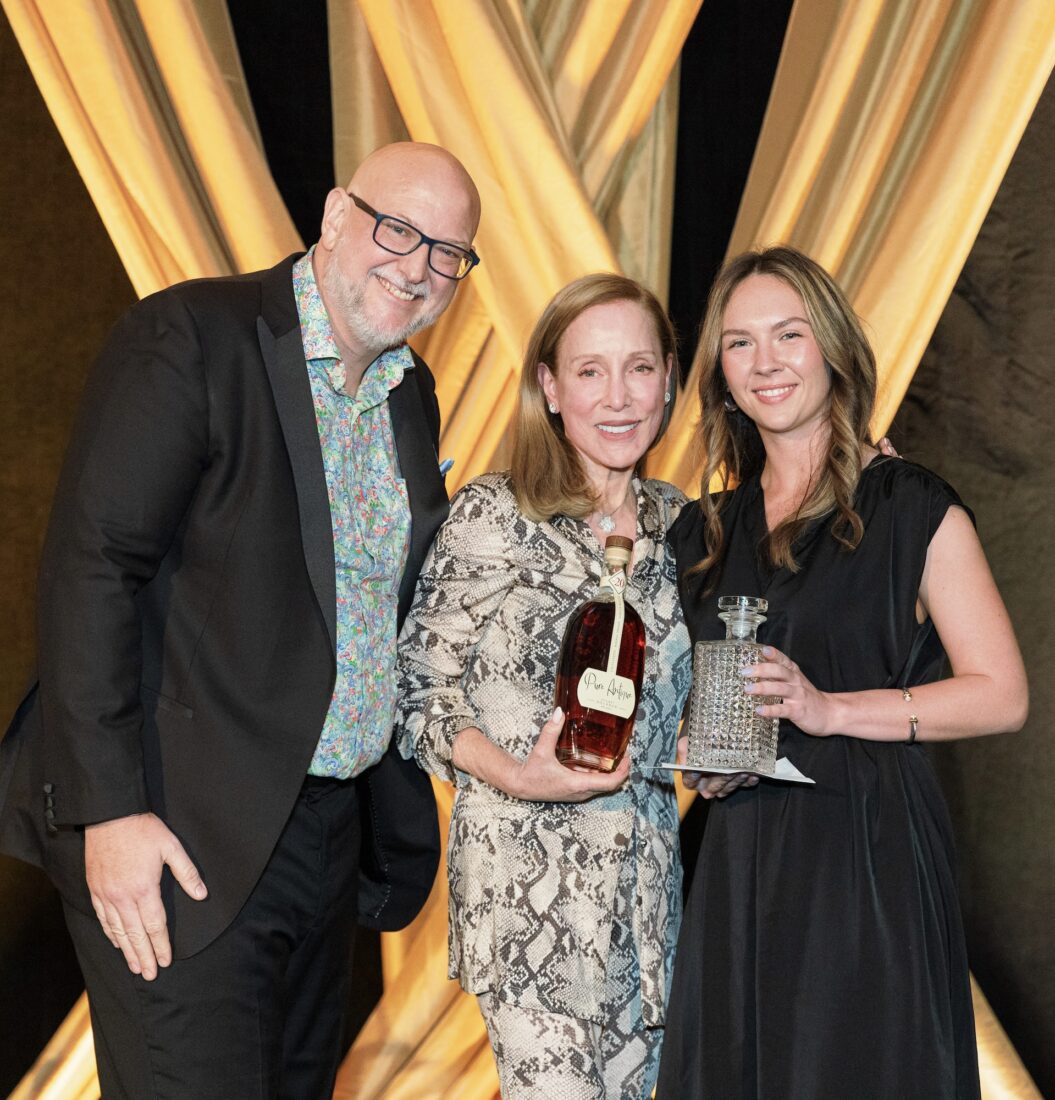
These days, Palatella commutes between her California home and Bardstown, Kentucky, where she founded Preservation Distillery + Farm in 2015. (In 2021, she was one of the parents who pled guilty in the college admissions investigation involving William “Rick” Singer.) In addition to serving as the base of her barrel-aging and blending operations, the small distillery is home to acres of corn and two pot stills and is set to debut its first house-distilled release, a seven-year-old bourbon, later this fall.
Garden & Gun caught up with Palatella to talk awards, a special aging warehouse, and how folks might get a taste of the year’s top bourbon.
What can you tell us about this year’s San Francisco World Spirits Competition?
There are a lot of competitions, but it’s one that really means something. The judging is as close to being completely blind as possible, and nobody knows what’s been entered. We’ve only entered twice. We don’t curate our entries—we just pulled four bottles off the shelf, and they all scored from 93 to 98 [out of 100], with two double golds.
I was sitting at a table [during the awards ceremony], and they were going through all of the bourbon categories. We won Best Small Batch Bourbon, eleven years and older. Then, at the end, they announced that we also got Best Overall Bourbon. I said, “What does that mean?” And someone from the Tasting Alliance said, “It means you’re the best bourbon in the world.” They explained that out of all the categories and everything the judges tasted, yours was the shining star.
What makes this batch of Pure Antique so special?
I had sourced some barrels of ten-year-old bourbon from Tennessee quite a few years ago. They were good, but I decided to age them longer in our warehouse. It’s the old Kentucky Wine and Spirits warehouse in Bardstown, which sat empty for twenty-four years until we pulled the vines off and cleaned it out. It sits at the crest of a hill, and the breeze comes swooping up and flows through the warehouse. It has the most amazing microclimate—everything ages beautifully in there.
We put those ten-year Tennessee barrels in the warehouse, and they sat there for ten more years. We released some as an eighteen-year-old [bourbon], and it was really good. But then I tried the barrels again, and I’m like, “Oh my gosh. These are phenomenal!” They’re super caramelly and just beautiful, with buttered toast and all these flavors, which is crazy for something twenty years old. You rarely find something in that age range that has this kind of profile.
How much is left? After twenty years, I imagine the angels have had more than their share.
Like everything else at that age, we have so little of it. We may use the rest to blend with, but it’s so special.
We sold a few bottles [retail price $899], but now that we’ve won this, we’re putting together a plan so that more people can try it. How many times does a bourbon win something like this and no one ever gets to try it? I’m not going to do that. Especially because everything we do is in such small batches, I want to make sure people get a taste.
Will this be an event at the distillery?
Well, the holidays are coming up…we’ll announce something soon.
Speaking of, why build a distillery after so much success sourcing and aging bourbon?
I’ve always wanted to do a distillery. We’ve been known for years for having these rare, old whiskeys, but I didn’t want to live off that glory and not produce something fantastic. Also, there were no more old barrels. The whole trend had changed, and I wasn’t able to do things the way I used to do them anymore.
I’ve always loved Bardstown, and it’s been such a blessing to have the distillery there. Our family has done business in Kentucky and in Bardstown since the ’50s, and of course I’ve spent a ton of time there over the past ten years. There is a true Southern culture, and I’m just a ridiculous fan of Kentucky. People say, “Our biggest asset in Kentucky is the bourbon.” And I’m like, “No, your biggest asset is the people.”


